- Home
- M G Vassanji
And Home Was Kariakoo Page 2
And Home Was Kariakoo Read online
Page 2
One day in 1971 the government announced the confiscation of all rental property, in keeping with its recent socialist doctrine proclaimed as the Arusha Declaration. This meant that for the Asians, who had arrived penniless to Africa, two generations or more of family savings invested in property disappeared at a stroke. Of course, most families, including mine, did not possess such savings. But the shock of this announcement, seen as the Great Betrayal by the businessmen, who could easily have kept their money in the banks or invested it abroad, led many to decide to emigrate. Since the mad dictator of Uganda, Idi Amin, following a divine revelation, had just expelled Asians in an ethnic cleansing (the term was not in use then), the decision to emigrate was relatively easy. Most went to Canada, some to the U.S. and U.K. The evacuation of Gaam, especially by the Khoja Ismailis, opened space for upcountry Indians to move into. Gaam changed its face and its ethos; the newcomers had the aggression and all the scruples of the pioneer; it is from among them that the wreckers of the old Dar have emerged. Meanwhile the business streets of these upcountry towns look haunted, as they wait to fill the vacuum left by their Asians.
As I negotiate the maze of dusty streets that is Gaam, which I know like the proverbial palm of my hand, as I turn into this one and onto that one at a whim, the provenance of this area is still evident in the names of the buildings, put up in Indian fashion on top of each—Salim Mansion, Durga Manzil, Jiwan Hirji Building. “Mansion” meant a two-storey building, not a grand home in its dictionary sense. In each “mansion” four or more families of five to eight people had their apartments, in three-room flats. Four to six kids could easily share a room; it was not unusual to share beds. It is almost bizarre to imagine that in many of these Dar families, living now in Toronto, Los Angeles, or someplace else in North America, the children have their own bathrooms, and sometimes even for a married couple to share one seems awkward. It’s almost as if one were transported from the rowdy wooden front seats of the Empire Cinema onto Sunset Boulevard itself.
(Photo Caption 2.1)
Some years ago I visited Jamnagar, Gujarat, and walking along a street I could have sworn that I was in Gaam: the yellow or white buildings with oil-painted window frames, the shop names, the variety stores for small needs, were identical to those you would see around Dar’s Khoja khano (prayer house). My forebears had brought Gujarat with them.
My friend Walter Bgoya one day shed a new light for me on those cataclysmic property nationalizations that altered the demography of urban Tanzania. I met Walter first in the 1990s when I began returning to Dar and knew him as a publisher struggling in a hopeless book market. His books were in Swahili, small and simple in design, his market almost moribund. His office was a modest house on an unpaved street in Kariakoo, behind Msimbazi Street, where my grandmother had had her shop once. I had put up at a guest house called the Flamingo in Gaam, where for five dollars you could share a room and at night as you lay awake hear the tales told to each other by itinerant young Asian businessmen, in town from someplace like Mwanza or Arusha. My friends in Dar were always amused that I would stay here, but it was where the action was. You could run into someone from London or Toronto whom you’d not seen in a decade; you might gaze pityingly at an aged, sickly man whom you just barely recognized as the ghost of someone you’d last seen in childhood; you’d hear tantalizing stories of smuggling during the Uganda war and adultery in the community. Here were characters. And here one evening, the khano nearby blaring out a prayer on a loudspeaker, Walter picked me up in his jalopy.
He lived in a flat in a two-storey building nearby that was once owned by some Indian. As we went up the dark stairs, past the first floor to the second, he said, “Without the government takeover, I would never have lived in this area, next to an Indian family.” Indians had lived in unofficially segregated community neighbourhoods, Africans lived next to Africans, in accordance with a town plan drawn up by the Germans during their rule and followed by the British who came after. Now Walter’s son was close friends with the daughter of his Indian neighbour. Politics and economics aside, this revelation was an eye-opener for me.
Sadly, this Gaam, the India town to which I would come almost daily up Uhuru Street to go to the khano or the library, and lingered on the way back to play cricket at a friend’s backyard; this Gaam which connected the bedroom suburbs of Upanga and the wealthy and expatriate areas of Oyster Bay and Msasani to humble Kariakoo and the airport; this city within a city was sealed off into an Asian ghetto soon after I left. Some expatriate city planners had apparently decided to construct a highway to bypass it so you had no need to go there unless you lived there or had some business; and for good measure they barricaded the area, putting up a pipe fence at the end of the key Jamhuri Street where it joined Uhuru Street. It takes an outsider to be so insensitive to a thriving, historical neighbourhood. I cannot help but wonder: Was this brutal closure prompted by that old animus towards the Asian in Africa, the tribe that always comes between white and black and so irked the Europeans? Or is this simply paranoia on my part, a residue of the old colonialism?
Cavafy says, of his own gaam, Alexandria,
You tell yourself I’ll be gone
To some other land, some other sea,
To a city far lovelier than this …
There’s no new land, my friend, no
New sea, for the city will follow you,
In the same streets you’ll wander endlessly
And you ask me incredulously, How can you compare your measly backwater Dar es Salaam to Alexandria? Or, more obscenely, to Cairo and Bombay? To which I reply, Surely everyone inhabits his own space within a city, a space crowded by its characters and coloured by its stories. And Dar had enough for me—has enough for those who came after me—to fill the pages of a Decameron. Every Dar is a Cairo to its inhabitants; you only have to be able to see it.
My first return visit to East Africa, after a mere eighteen months in Boston, had been to Nairobi, the city of my birth, where my family—always nostalgic about it—had returned after the panic of the socialist takeovers in Tanzania. I first returned to Dar es Salaam after nineteen years, and a little nervously, for I had left under dubious circumstances, when travelling abroad was controlled by the socialist regime. How can you stay away from beloved Dar for two decades? Painfully; and by writing about it.
An aunt’s brother had come to pick me up at the airport late at night, and took me to his home, a first-floor flat on Msimbazi Street, where he ran a shoe store. I went straight to bed. I had left Dar at a time when it was common to leave the windows open to the breeze at night, and a favourite childhood memory is of sitting at a window in the middle of the night looking down at the empty street below. My cousin’s flat felt like a prison, barred to the outside and cooled by uncomfortable air conditioning. There were no children about, where formerly there would have been a clamour. There was a television, but only with one weak signal from, of all places, Zanzibar. Much had changed. Much had to change.
A block from where I lay awake was where my grandmother had lived with two of my uncles in one of those old-time iron-roofed mud-walled houses with a wide shopfront, a living quarter with one or two rooms behind it, and a yard with a large, sticky dining table covered with flies and a stinking hellhole of a pit latrine with crawling maggots and stifling smell into which I had a terror of falling. Next door was the pombe shop, an open-air communal bar the size of a football field, reeking of brew and throbbing with a deep and constant drumbeat, where shadowy figures moved amidst the smoky woodfires, some of whom emerged into the street chanting in mock, broken Gujarati or Kutchi to scare the young Indian kids in the shops. One drunk would come and stand before my grandmother’s shop and sing: “Chapati Banyani nani kula?” Who eats the chapati of the Indian? And he would proceed to name the different communities who ate chapatis, who were mindless—he said—like cows. Dar es Salaam, for me at age four, was a comedown from the suburban Nairobi bungalow we had left behind, with its French wind
ows and garden of roses. But later, Msimbazi was the place where my best friend lived, where I went to play cricket in his backyard with his two brothers. The family owned a pawnshop, with a noisy crowd always clamouring outside, waiting to cash in their tickets.
Early the morning after my arrival, after breakfast I came down and bid my relative so-long in his crowded shoe store and started walking the familiar streets. Down Msimbazi, eastwards up Uhuru Street, both lined with two-storey Asian buildings—all of which had been nationalized, many of their previous inhabitants now in Toronto. And on and on I walked, up the long street to Gaam, finally arriving at the thin line of the seafront, with its old Catholic and Lutheran churches, and the veranda-ed, white, one-storey office buildings, all from German times, which lasted from 1885 to 1916. Along the shore, northwards came the State House, the President’s residence, also from German times, reconstructed after a British warship demolished it during the First World War; behind it were the dainty European bungalows; and on and on I walked past the golf course to the Upanga residential area, where my family had moved in the 1960s, to our old flat, outside which, to my amazement, the papaya tree still stood.
I was a being possessed, nothing could stop me that morning. From the Upanga flat I walked onwards to my old school, pronounced Boyschool those days, and noticed that the big brass bell was missing from the garden where it had been mounted on a metal frame—every day one grinning fellow was picked for the privilege of leaving the class on the hour to toll the bell. Past the frame where it used to hang, I walked over to the science laboratories. The physics lab was on the first floor and I took the stairs with confidence. This was my school. I went in, walked through the aisles between the benches; to the back wall where the DC converter used to be; and to the office. There was no one in sight. On the way out I stopped in front of a wall. Hanging there was a solitary framed certificate. In fading typewritten letters, it bore my name on it, being the one that I had won at a Nairobi science fair, and that was perhaps instrumental in my admission to an American university—and consequently in my flight away, from which I was returning after all these years, heart full of emotion.
(Photo Caption 2.2)
3.
Gaam Strikes Back: The Leaning Tower and Other Recent Developments
ONE AFTERNOON NOT LONG AGO after a meeting in New Haven I took a taxi for the intercity bus terminal, from where I would head off to the airport. The driver, a man in his thirties, was yammering away on his cell phone, had barely time to look up for instructions. My irritation, however, evaporated as soon as I realized that he was speaking in Swahili. I let him go on for a good twenty minutes or so, eavesdropping on a bit of trivial gossip, until finally he stopped the taxi and looked at me in his mirror. I asked him quietly, in Swahili, “Zitakua ngapi?” How much will that be? He gasped. We exchanged niceties, and went our ways.
There is something about Tanzania and its lingua franca, Swahili. There’s a certain way to speak it that identifies you, and when there’s a chance to speak it, you can’t keep your mouth shut. You love to banter in it, it’s your possession. Recently I arrived at Dar es Salaam airport with a friend, and found myself waiting while he obtained his visa. When he was finished I proceeded to an immigration wicket, where the officer asked me, a little agressively, in Swahili, “Why were you waiting?” I replied, “I was waiting for my companion.” “Where did you learn your Swahili?” he countered.
There was a time when the border officials made you tremble; they could create a lot of trouble—confiscate your passport, for example. But I am older now, and the country has changed. And—time to come clean—I carry a Canadian passport.
“Uhuru Street,” I replied to his question, naming the street where I grew up.
There was a pause. A smile. And I knew why. If I had named the street as I do in English, with the stress on the second syllable of “Uhuru,” I would be a foreigner. But I had said “Uhuru Street,” as I would in Swahili. There is no other way to respond in that language, which comes to the tongue as readily as the taste of a much-loved fruit: a mango, say, or a ripe jackfruit.
The man responded, “Hongera.” Meaning, well done, congratulations. He stamped my passport. I was back.
The population of Dar is about that of Toronto, or any large western city. The country, once a small trust territory, has a population surpassing Canada’s, and the East African countries, once again contemplating an economic community, have a combined population of 130 million or more. There are any number of natural resources. There is therefore all kinds of potential. The only question is whether corruption will eat up the wealth before it has a chance to improve the lives of people—bring textbooks and teachers to schools, for example, and illuminate the dark nights of the villagers. The city itself has expanded, swallowing up the outlying villages and neighbourhoods: in the evenings, blinding streams of headlights stretch for miles on end, almost as far as Chalinze, the junction from where the road branches north towards Kilimanjaro and Nairobi. Construction proceeds apace, and taller and fancier office buildings are in evidence everywhere in the newer business areas skirting the old Gaam. And yet the city only manages to look physically uglier. One has to admit, beloved Dar never had a sense of urban beauty and proportion, never saw much use for green spaces and trees. What there was of grace was due to its small size and colonial look; that has mostly gone.
But Dar to us is not what she looks like, it’s what she is.
In Toronto there is a hangout called Safari where former denizens of Dar es Salaam gather in the evenings, where you might hear Swahili spoken, if not always full conversations then at least frequent expletives learned from the streets of Kariakoo and Gaam. It is a strange place, in a strip mall in an old European ethnic neighbourhood where an attempt to create an India Town around a cinema some years ago was snuffed out by the advent of VHS. The space is narrow, the lighting dim, and the patrons are all in their forties or over—bachelors, men who’ve taken leave from their families for a few hours, and couples, who can drink beer or whisky away from prying, sanctimonious eyes. The lingo is Dar. The owner and chef is also from Dar, a former rough-boy from Boyschool, now mellowed; a woman, perhaps with dyed hair, might stand at the front and sing sad Hindi film songs from yesteryear on karaoke, taking requests; a child might be waiting for her, at a table, with a book or laptop. You might wonder who exactly she is, why she has to do this. A depressing place, this, all in all, for its utter and unspoken nostalgia, its desperate and somewhat furtive ambience, and even the raucous laugh or argument sounds forced. You might come here before putting a bullet through your head. But it has other merits besides alcohol and familiar accents. It makes mishkaki, what the Kenyans call, crudely, nyama choma: grilled meat on skewers, East African style; it serves also fat, white mhogo (cassava) chips. But most important, what gives the Safari its imprimatur is that it serves meat kababs—round in shape, fried dark brown, and subtly spiced—that conform to the gold standard of Gaam’s venerable KT Shop. With the kababs come coconut chutney. This is Gaam in exile.
KT Shop in Dar—abbreviated “KT”—is itself infinitely more cheerful, though a hole of a place. It’s on a short road off Jamhuri Street that’s not been resurfaced in half a century, a stone’s throw from where years ago the Odeon used to bring regular fares of Bollywood. It is a narrow and shallow space, with six low tables set against one side wall, which faces a long and tall counter, behind which sits a bored manager. Behind him is an oversize Liverpool Football Club poster. On the back wall is another large poster, faded but framed, showing the great mosque of Mecca. The chai and kababs are legendary. For decades, Asian shopkeepers and salesmen stopped here for their mid-morning snack; nowadays customers from all backgrounds—bureaucrats, business people, housewives, truck drivers, tourists, the unemployed—come to share the small tables. It is a truly egalitarian place. A domineering, short waiter called Abdu in a dirty white apron sees to it, sternly, though not without a sense of humour, that when you finish you
r snack you vacate your seat promptly for a grateful someone else who’s been waiting in the aisle, eyeing your progress. This is not the place to come to if you mind the small cockroach playing possum in a corner, or the hand that wipes your table with a towel from Abdu’s shoulder also laying down your plate of kababs and chutney. But for the many who return to Dar, arriving late in the night when the overseas flights land, the first stop the next morning is for sure the KT. And they will swear, the tastes have not come down a notch from their perfection.
Outside on the broken pavement beggars stretch out their hands familiarly—with the taste of chai and kabab lingering in your mouth, you can afford to be generous; next door is a DVD store; across the street two newspaper vendors sit with spreads of about a dozen papers. Behind them is a barbershop decades old, where four young barbers ply their trade, one of them an African. Such is the level of comfort now, between different peoples. Traditionally, Asians had their hair cut by Asian barbers, the nai or the hajaam, who came from the barber caste. When I go inside for a trim, the talk among customers is friendly and boisterous: kids’ schools, football results, recent overseas visits, pilgrimage routes to Syria and Iraq.
This is quintessential Gaam. Its recent transformation, and there is that, seems drastic and yet is organic to its nature: haphazard, careless.

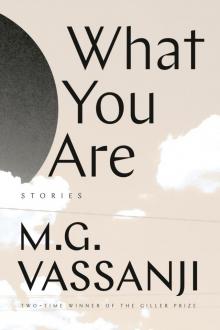 What You Are
What You Are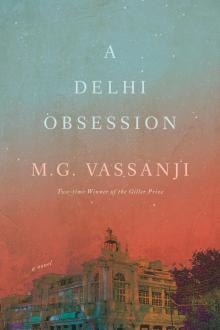 A Delhi Obsession
A Delhi Obsession When She Was Queen
When She Was Queen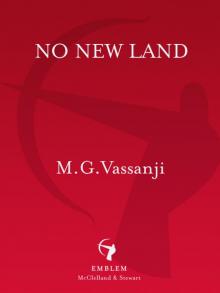 No New Land
No New Land Nostalgia
Nostalgia Mordecai Richler
Mordecai Richler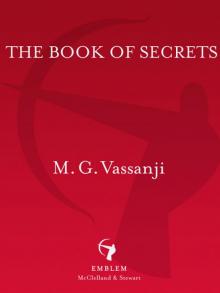 The Book of Secrets
The Book of Secrets Amriika
Amriika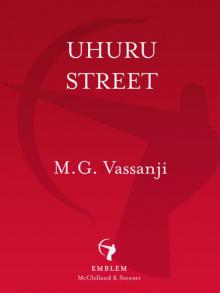 Uhuru Street
Uhuru Street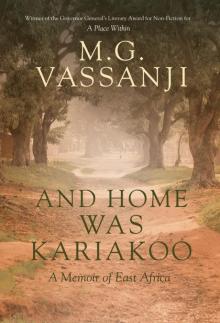 And Home Was Kariakoo
And Home Was Kariakoo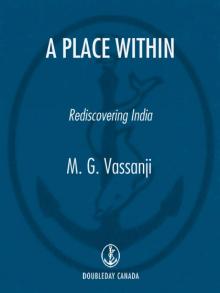 A Place Within
A Place Within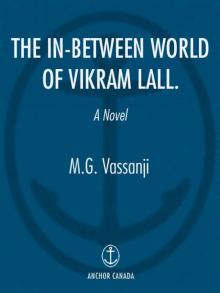 The In-Between World of Vikram Lall
The In-Between World of Vikram Lall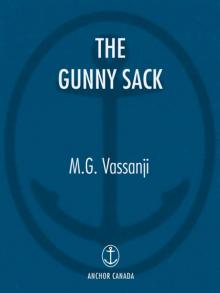 The Gunny Sack
The Gunny Sack